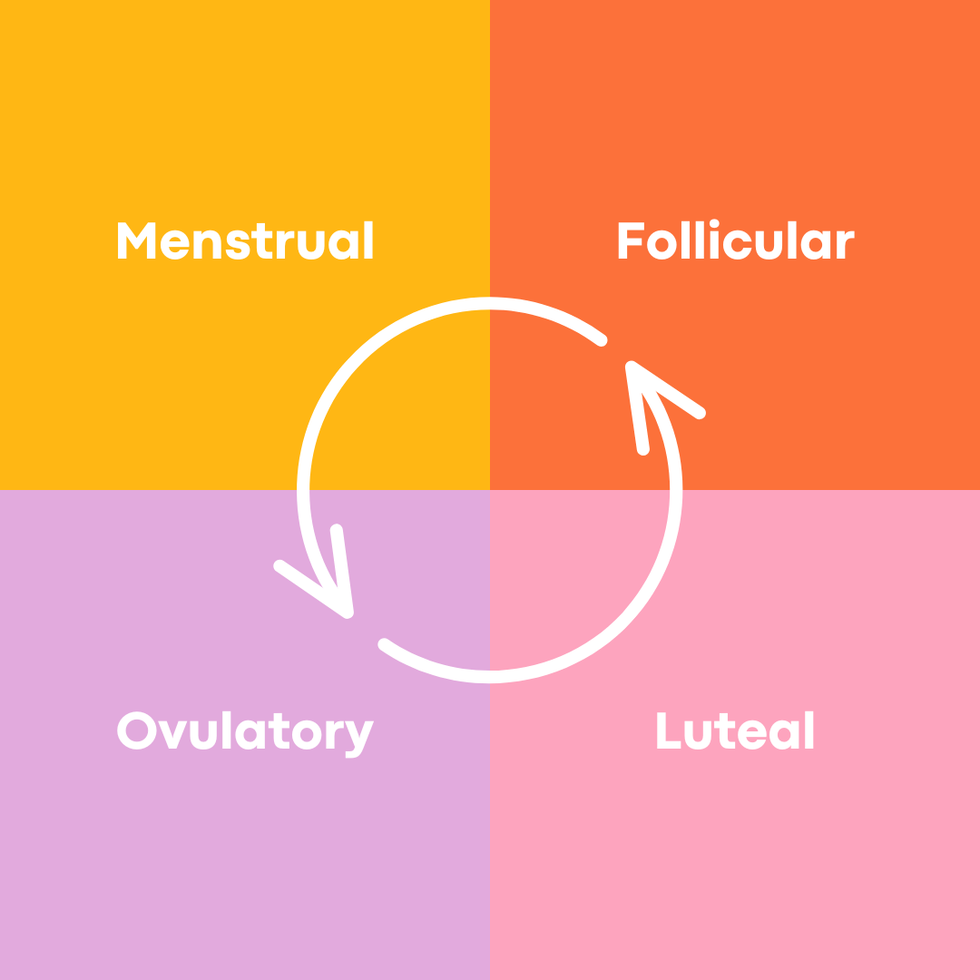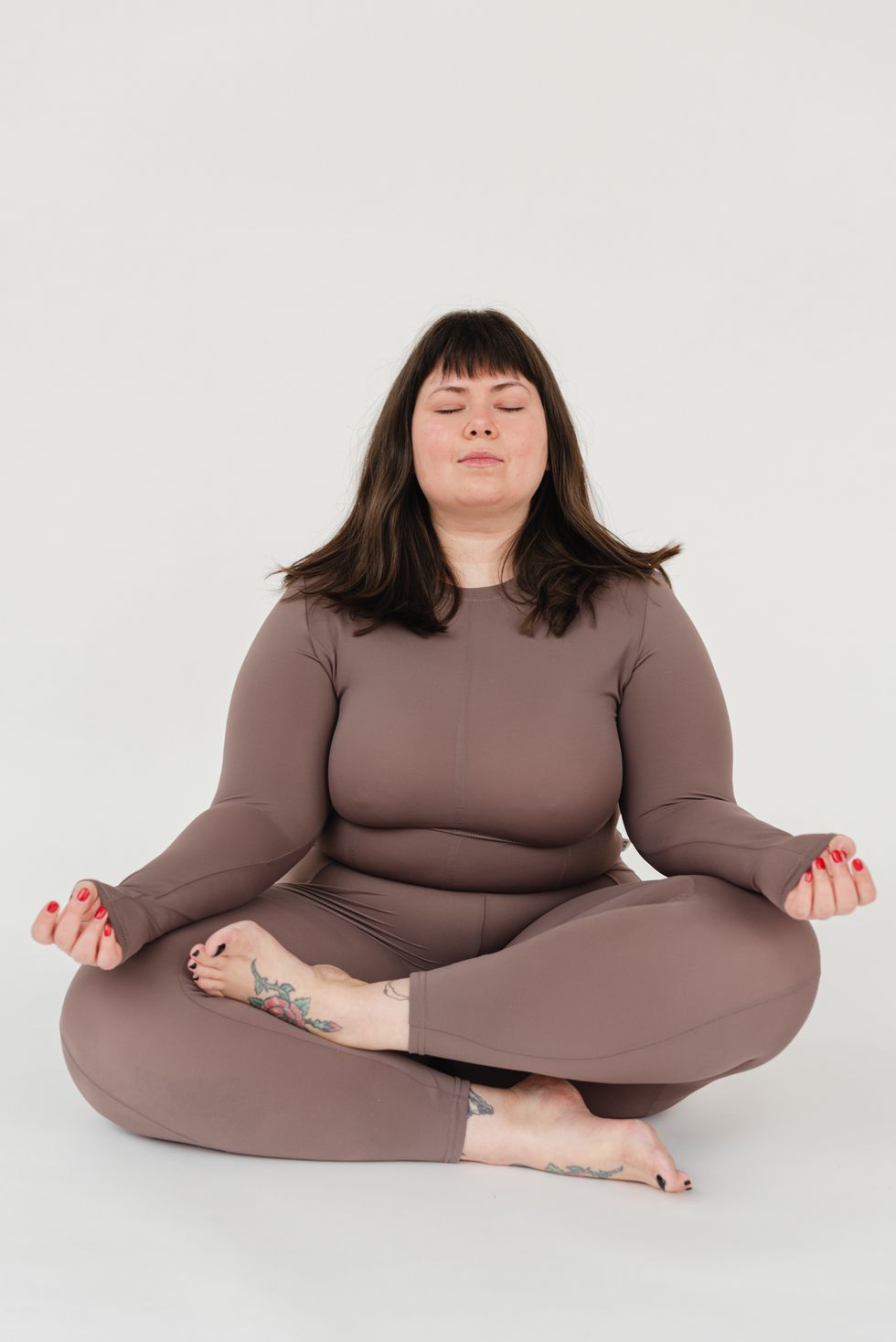Cycle syncing can help you feel better during that time of the month.
Cycle Syncing Is The Ultimate Self-Care Practice

Meredith Holser is the Shopping Editor at Brit + Co, covering everything from seasonal fashion trends and the best grocery finds from Trader Joe's to shoes actually worth splurging on and life-changing beauty products. Outside of work, you can catch Meredith hiking, trying new recipes, and dreaming about having a yummy little treat.
If all you learned about periods growing up was that it's something that happens once a month, the subsequent experience of the endless cramping, craving, and crying can all be really confusing. You may know that your hormones are hard at work during your cycle, but understanding how they fully affect your energy, mental health, libido, and more is tricky. Thanks to ongoing research and knowledgable women's health experts, we can gain some clarity about what the heck is going on with our bodies during *that* time of the month. Cycle syncing is a life-changing way to manage your wellbeing and get to know your hormones on a deeper level. Read more on what exactly cycle syncing is, and how you can start your journey.
What is cycle syncing?

Photo by Ann Zzz / PEXELS
Cycle syncing refers to the adjustment of your habits, such as exercise and diet, to match the different phases of your menstrual cycle. With each phase comes fluctuating levels of hormones, which cause you to have varying levels of energy, sleep, mood, appetite, and libido. Changing certain lifestyle habits in accordance with your hormones can help you optimize how you feel throughout your cycle, and feel more balanced overall.
Though research surrounding cycle syncing is growing, the practice isn't commonly accepted as mainstream. "Cycle syncing is not currently scientifically proven, as there is limited data available to support the idea, showing how much more research needs to be done into female health," says Dr. Claudia Pastorelli Mosca, obstetrician, gynecologist, and Medical Advisor at Flo Health.
Who is cycle syncing best for?
Cycle syncing can be helpful for women who are overweight, overly tired and fatigued, have low libido, have PCOS, or want to conceive. In general, if you have a hunch that your hormones are ruling your life, cycle syncing can provide some great benefits.
What are the benefits of cycle syncing?
Cycle syncing may increase energy levels, minimize mood swings, and lessen those other yucky period symptoms. The practice can also allow you to have more effective workouts, and feel more balanced when it comes to your wellbeing. Cycle syncing may also provide you with a heightened awareness of your fertility cycle if you’re trying to conceive.
The Phases of the Menstrual Cycle – What Happens?

- Menstrual phase (Days 1-5): Estrogen and progesterone levels are low in the menstrual phase, as your body sheds its uterine lining. You may experience period symptoms like cramps and headaches.
- Follicular phase (Days 6-14): Estrogen and progesterone rise in the follicular phase. Typically, you’ll feel like you have more energy, and are in a pleasant mood.
- Ovulatory phase (Days 15-17): The ovulatory phase is when your body has the highest levels of estrogen. Testosterone and progesterone are on the rise. You probably feel like you want to get it on, as these hormones produce the highest libido levels in your cycle.
- Luteal phase (Days 18-28): The highest levels of testosterone and progesterone are present in the luteal phase. If the egg isn't fertilized, your body is preparing to cycle again.
Note that each phase can last for a different amount of days for everyone, and this schedule is a standard estimate.
How do I cycle sync?
Keeping track of your menstrual cycle and symptoms using a calendar or mobile app like Flo is helpful for cycle syncing. This way, you know what to expect from each of the phases you go through, and can sync accordingly.
Adjusting your diet and exercise habits are at the core of cycle syncing, because they can allow you to better manage the hormone fluctuations that take place.
"Always paying attention and listening to your body, including during your menstrual cycle is important," says Dr. Pastorelli Mosca. "Acting intuitively, such as taking it slower during exercises when you don't feel too energetic during your period, is totally okay. Understanding that you don't have to always be performing on top of your game in every aspect of your life is a great way to respect your body signals."
Keep in mind that hormonal contraceptives (the pill, vaginal rings, IUDs, etc.) could get in the way of experiencing all four cycles. It's important to talk with your doctor first about if cycle syncing is right for you.
The Best Workouts for Cycle Syncing

Photo by SHVETS production / PEXELS
- Menstrual: It’s best to do light movements during your menstrual phase. It’s normal to feel super fatigued during this phase, but moving your body can help encourage blood flow and minimize pain. Meditative yoga, light at-home pilates, and easy walks are a few optimal workouts.
- Follicular: Light cardio like hiking, jogging, or flow yoga and Zumba are the best workouts for your follicular phase.
- Ovulatory: Pump things up a little bit during your ovulatory phase, since you’ll likely have more energy than normal. HIIT workouts and fast-paced cardio like spin classes are the best.
- Luteal: Practice light to moderate exercise during your luteal phase as your body prepares to repeat the cycle. Do some strength training, running, meditation to get you through this phase.
The Best Foods to Eat for Cycle Syncing

Photo by Element5 Digital / PEXELS
- Menstrual: Avoid fatty foods, caffeine and salty foods. Indulge in iron-rich foods like nuts, lentils and meat to support the body’s blood loss at this phase.
- Follicular: Sprouted and fermented foods are the best support during the follicular phase. Focus on eating high-fiber and high-zinc foods like eggs and whole grains.
- Ovulatory: During the ovulatory phase, you want to eat foods that support your liver. Reach for whole fruits and vegetables, and nuts like almonds.
- Luteal: Hone in on serotonin-producing foods during this phase. Try incorporating leafy greens and quinoa into some dishes. Magnesium-rich foods like dark chocolate, spinach and pumpkin seeds will also aid in your low libido at this time.
Sign up for our newsletter for more women's health tips!
Header image by Anna Shvets / PEXELS



















